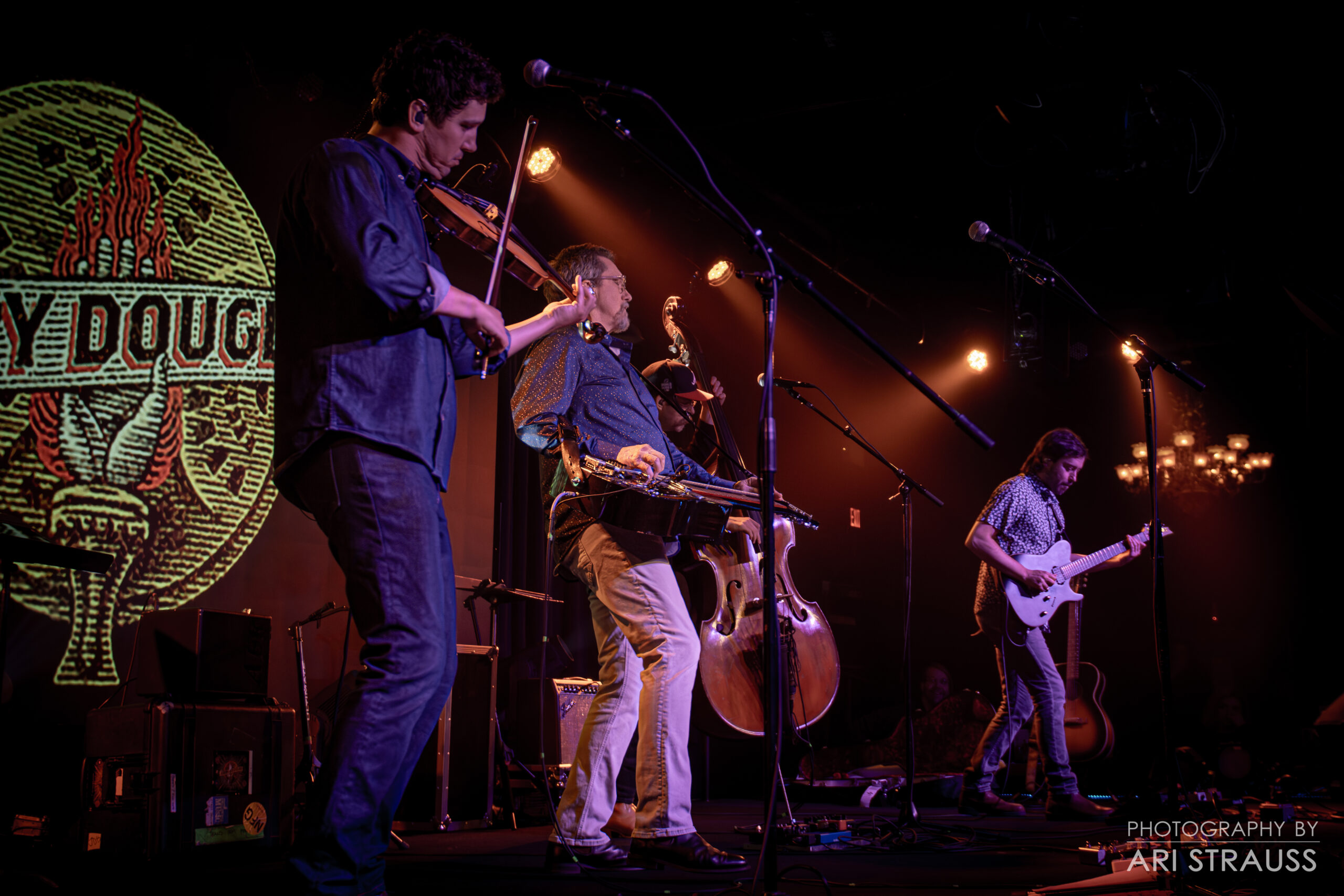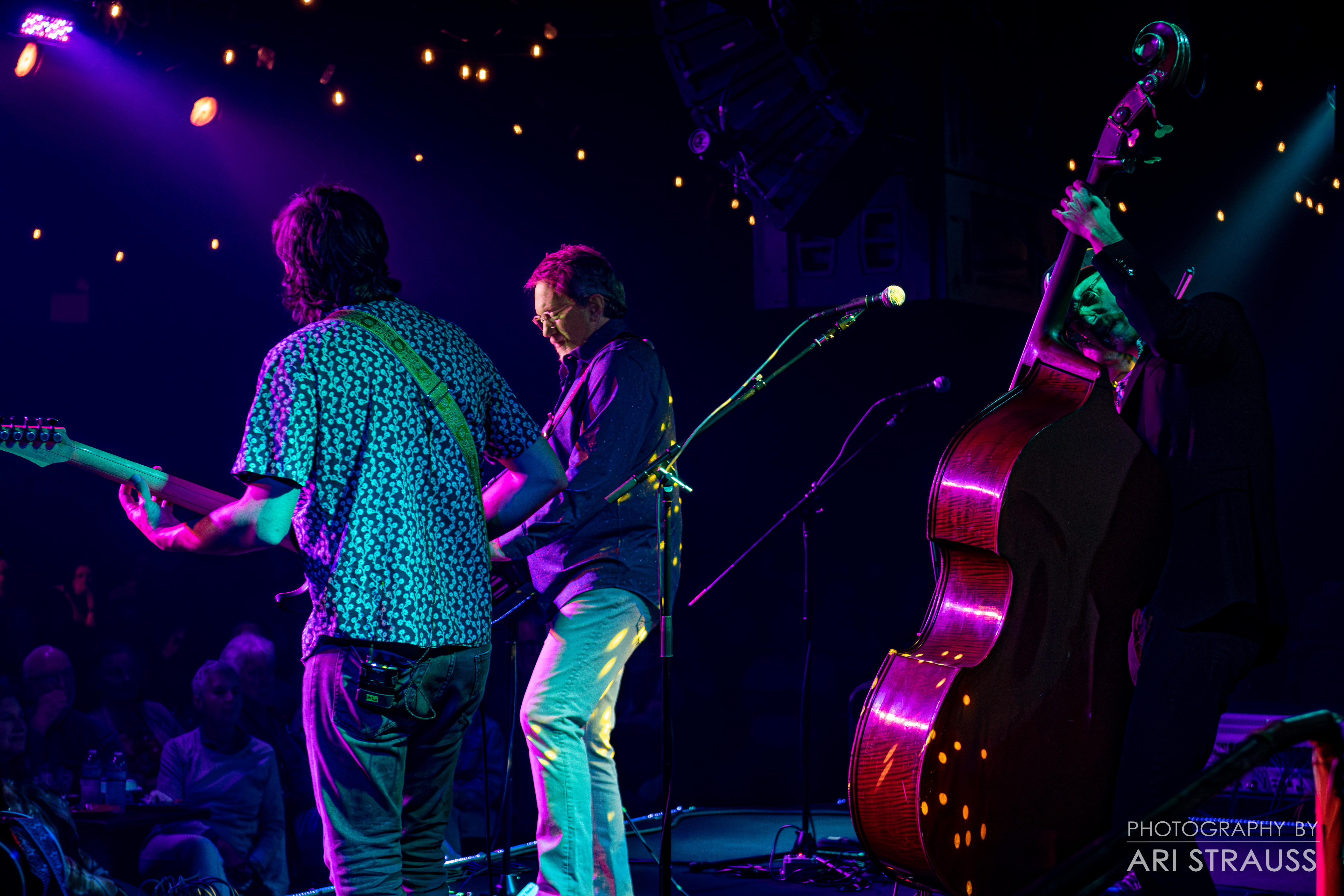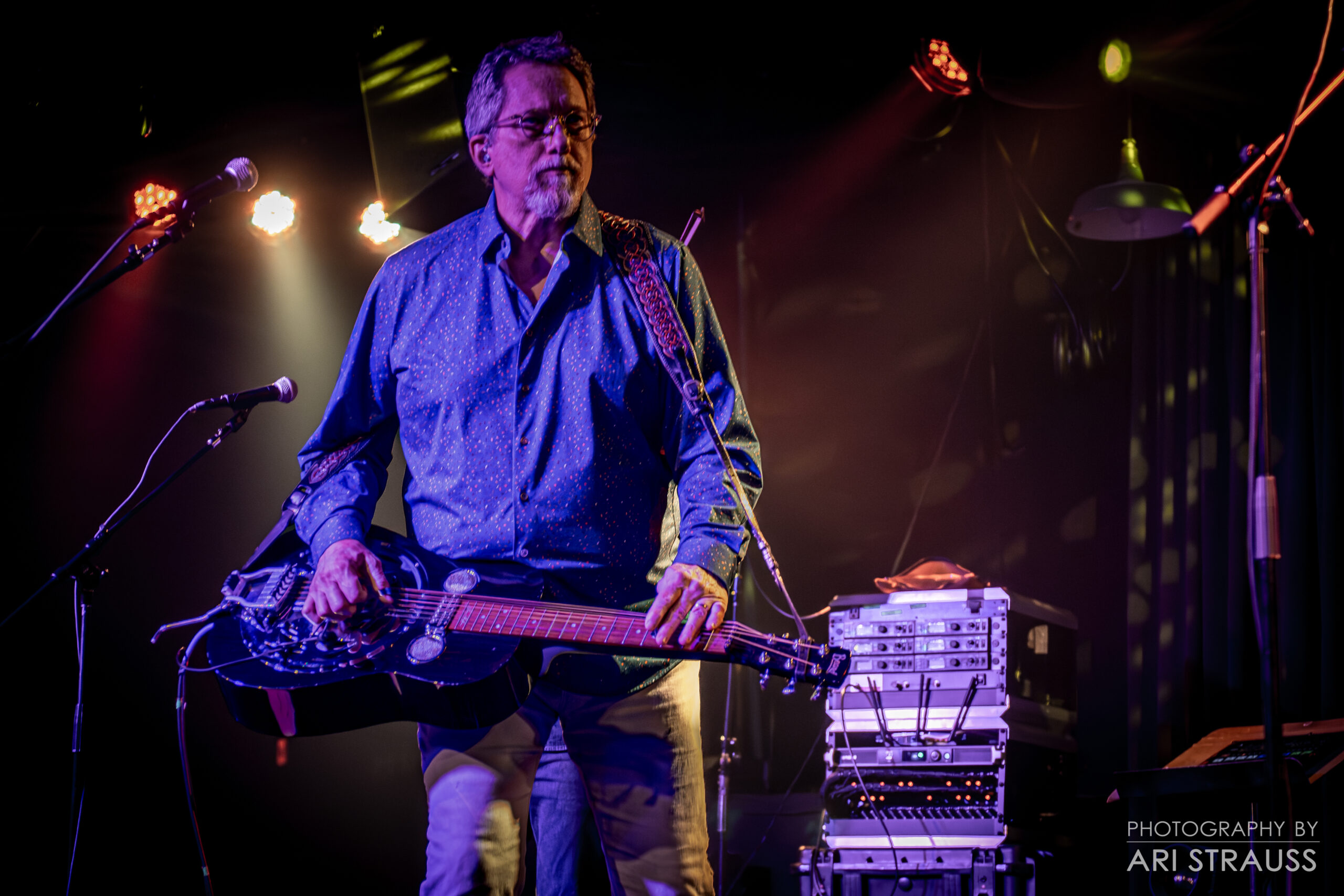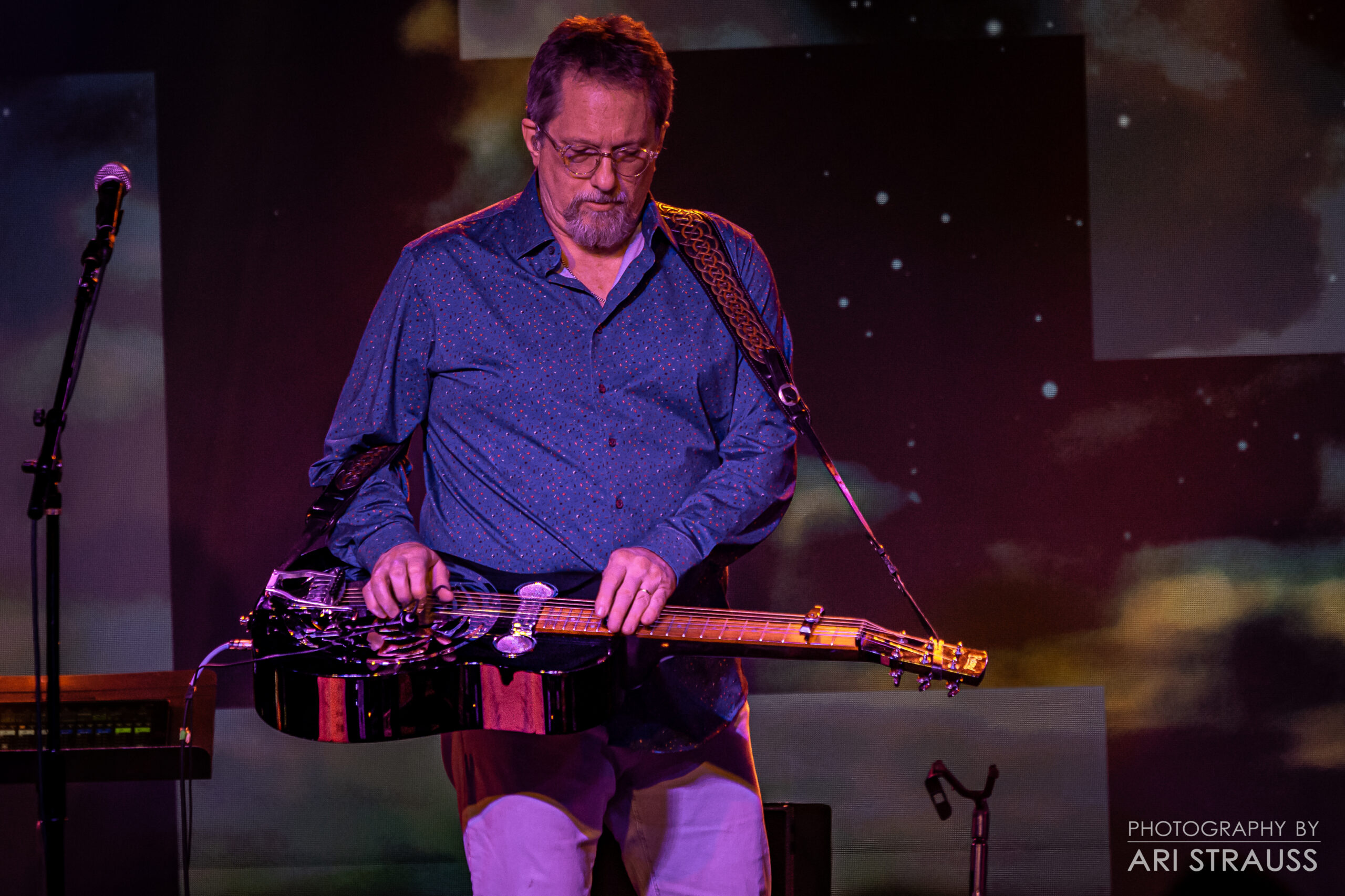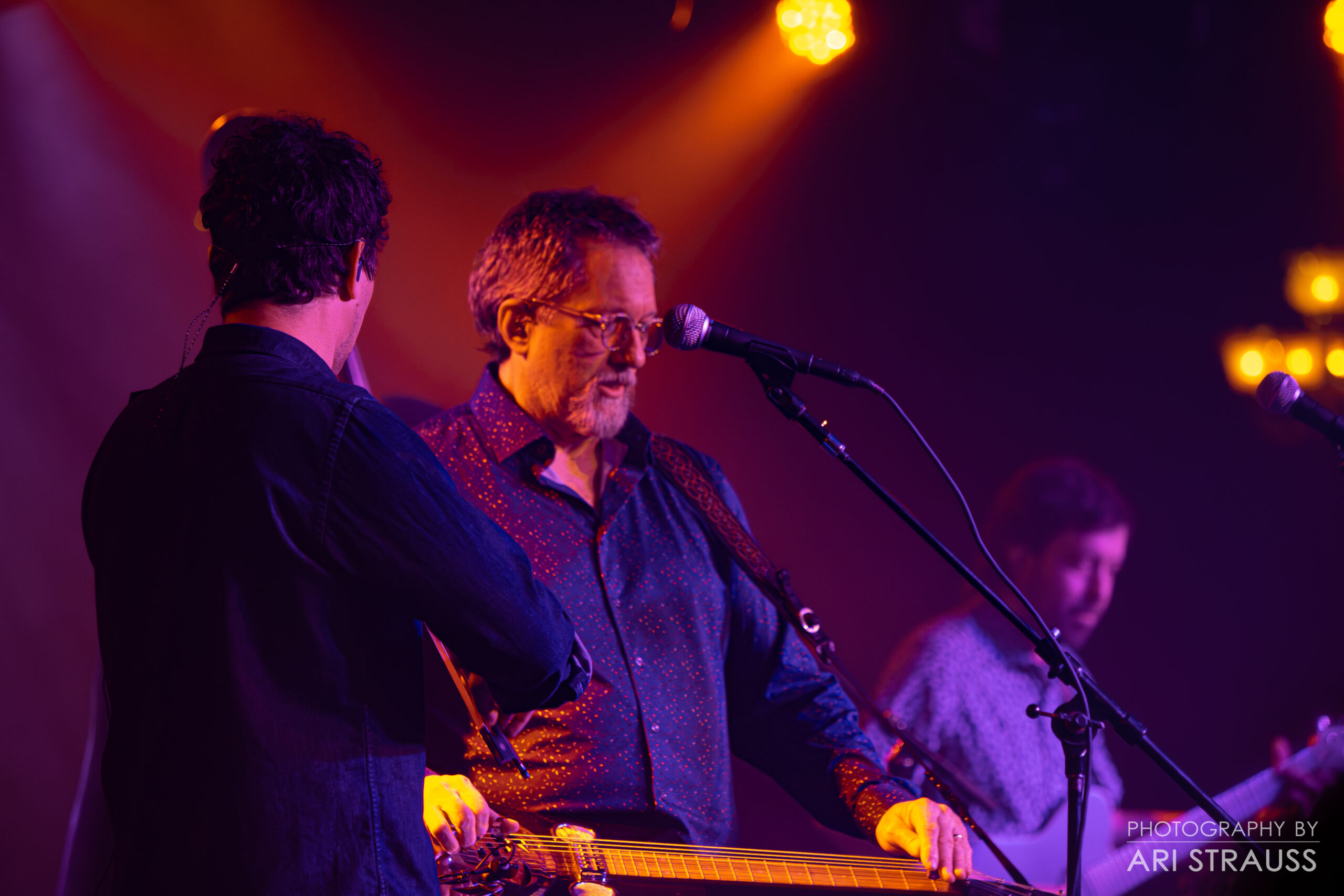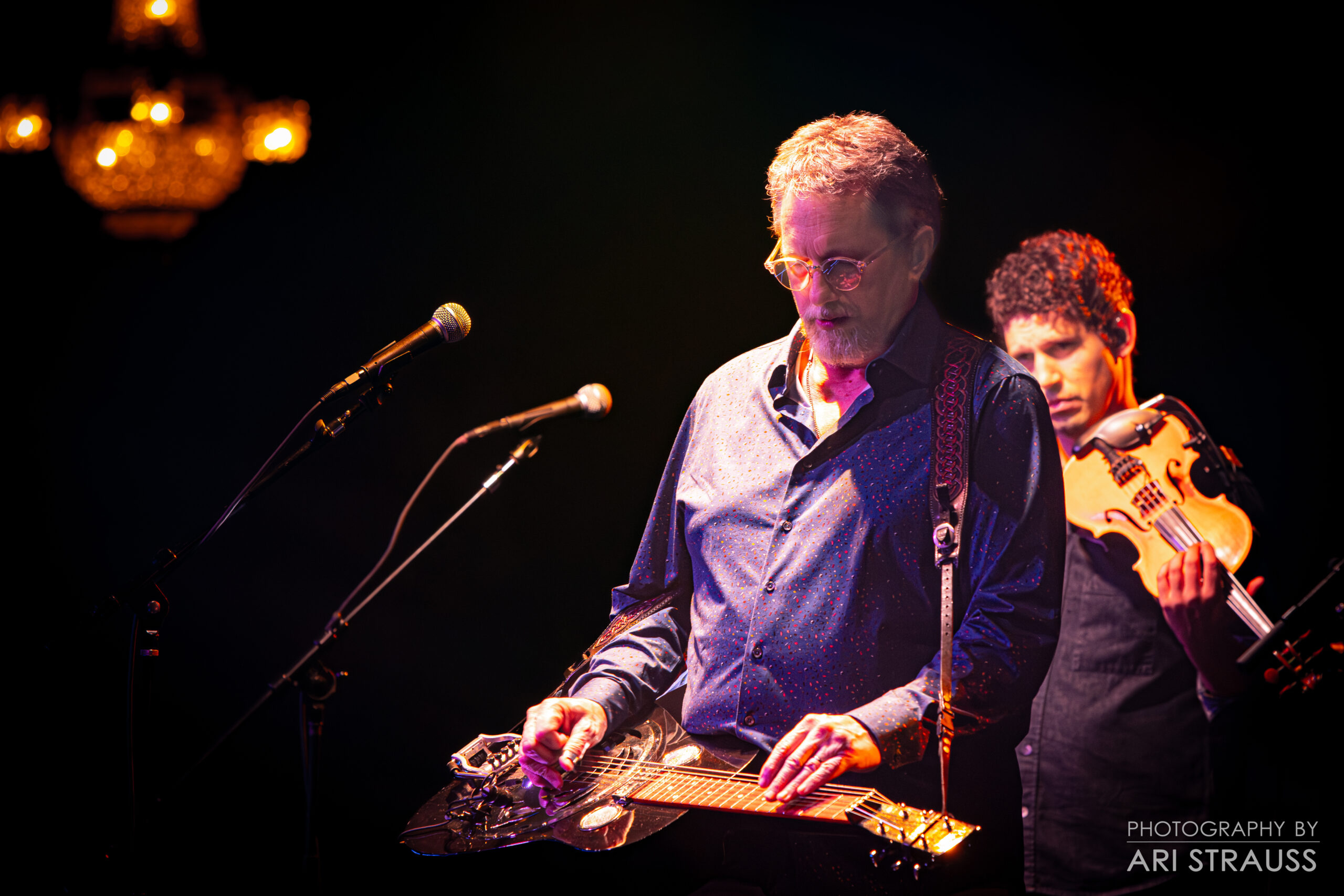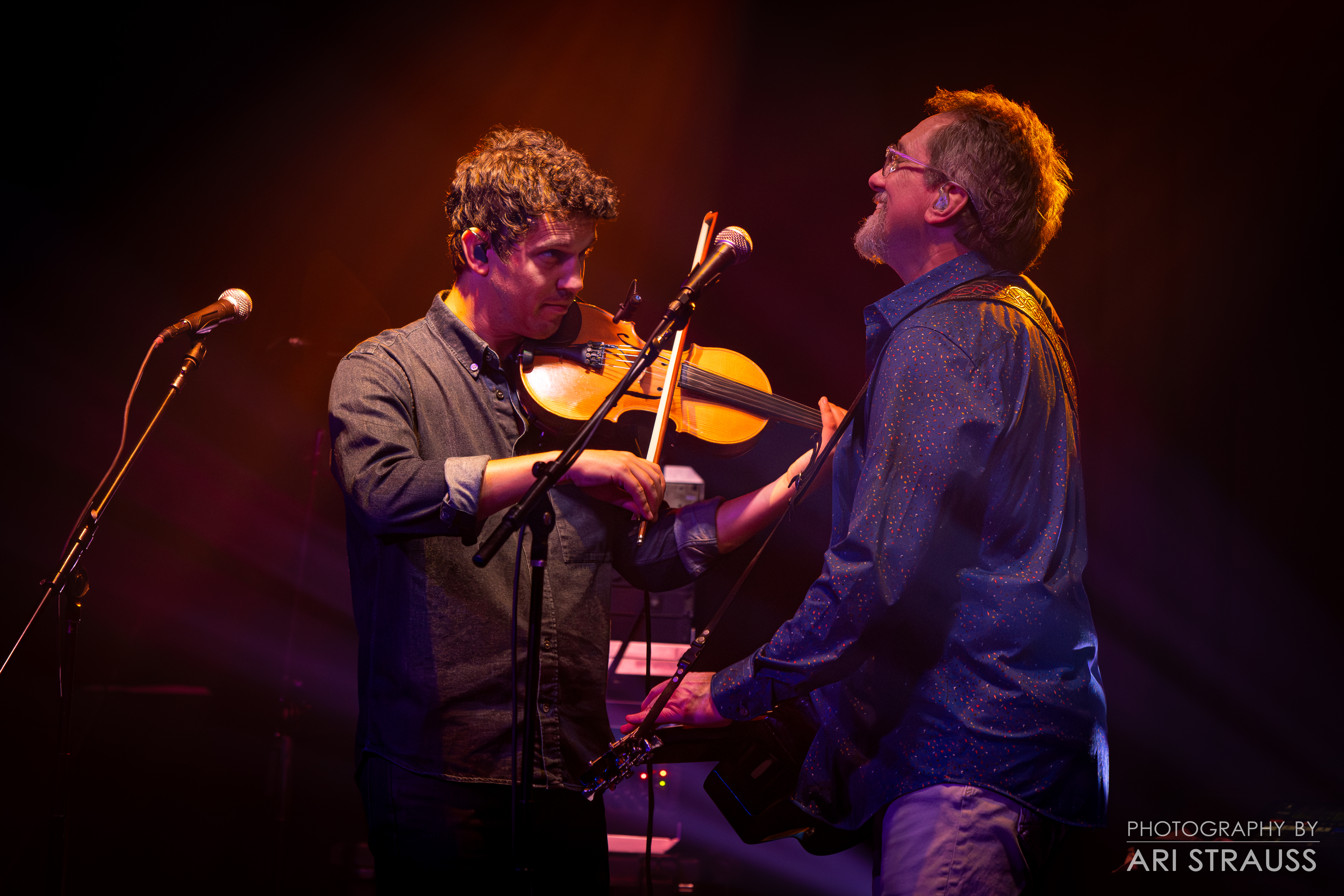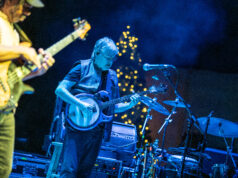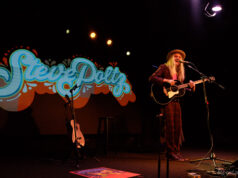Music is always evolving, and bluegrass is no exception. By the 1970s, it had been around for a couple of generations. Lester Flatt and Earl Scruggs, the successors to founder Bill Monroe’s crown, had split up. But the most important development of the decade was the emergence of progressive bluegrass, mirroring the progressive country movement more broadly. Progressive bluegrass pushed the boundaries of the genre in both instrumentation — incorporating electric instruments into what was previously all acoustic — and in its material, as artists adapted rock, blues, and jazz songs.
While some of the artists in progressive bluegrass hailed from the genre’s traditional strongholds in Appalachia and the Upper South, many came from outside those regions. Banjo virtuoso Bela Fleck, for example, grew up in New York City. Dobro master Jerry Douglas, who played The Birchmere with his band on Saturday evening, comes from Warren, a suburb of Youngstown in northeast Ohio.
If you’re not familiar with bluegrass, you may not have heard of the dobro. When people think of guitars, they usually think of traditional acoustic and electric guitars, but there’s a third type, known as a resonator. In a standard acoustic guitar, the motion of the strings over the hole in the body of the instrument creates its sound. As Wikipedia explains, a resonator, or resophonic guitar, is “an acoustic guitar that produces sound by conducting string vibrations through the bridge to one or more spun metal cones (resonators), instead of to the guitar’s sounding board (top).” The dobro, used in bluegrass music, is a single-cone resonator. (Other types of resonator guitars, which have more cones, are used in other genres; blues legend Taj Mahal plays one at times.)
Watch Jerry Douglas discuss resophonic guitars on his YouTube channel:
Since the ’70s, Douglas has been one of the best and most recognized dobro players in the world. Early in his career, he was a member of the progressive bluegrass band Boone Creek, which also included Ricky Skaggs. In a moving moment during his show on May 13, Jerry recalled that band playing its last show at The Birchmere. They were supposed to drive down from the Northeast, but, in their aged van, they found themselves unable to go any further in the snow as they arrived in Newark, New Jersey. They called the late Gary Oelze, who founded and ran The Birchmere, to tell him they couldn’t make it. In an act of great generosity, Gary paid for them fly in — and still paid them for the show on top of it. This moment of kindness meant a great deal to the young musicians, and it solidified a lifelong relationship for Douglas with The Birchmere. As he took the stage, someone asked if he played there before, and Jerry quipped, “Once or twice.”
Douglas’s long career has ranged widely. He’s played in several bands, including The Country Gentlemen, Strength in Numbers, and the Bluegrass Cardinals. In addition to his Jerry Douglas Band, which he played with Saturday night, he also leads the Earls of Leicester, a Flatt and Scruggs revival project. (“Earls of Leicester” is a pun, a play on the names Earl and Lester.) He’s also played in Alison Krauss’s band, Union Station, since 1998. He’s done session work for Emmylou Harris, Clint Black, Dolly Parton, Trisha Yearwood, Randy Travis, and Reba McEntire, to name only a few.
Saturday evening’s show was a showcase of the progressive bluegrass at the foundation of Jerry’s career. While the band was mainly acoustic — upright bass, violin, and Jerry’s Dobro — the guitarist switched between electric and acoustic during the set. And, in the finest progressive bluegrass tradition, the songs they played crossed all lines of genre. Douglas doesn’t sing a lot, and the two songs he did vocals on, Tom Wait’s “2:19” and Fats Domino’s “Something You Got Baby” were blues songs. They were great choices for his voice, which has a growling quality similar to David Bromberg’s.
In bluegrass, including its progressive offshoot, covers and instrumentals often make up a significant part of a band’s repertoire. There were a number of the latter Saturday night, including both Jerry’s own compositions and those written by others. “We Hide And Seek,” Jerry explained, has been a very successful song for him, having been recorded a number of times. “I stole that from a Beatle,” he said after an instrumental version of “While My Guitar Gently Weeps.” “I ripped off George,” he added.
Watch Jerry Douglas perform “We Hide and Seek” for FreshGrass 2022 on YouTube:
One of his regular gigs, Jerry explained, is the Transatlantic Sessions, over in Europe. During his most recent tour there, guitar legend Eric Clapton asked to sit in with the band on “Guitar.” He joked to Eric, “There’s a future in this for you.” Also on this latest tour, they stopped off at Abbey Road studios for some recording, so we can hopefully expect new music to be released in the near future.
The jazz influences that pervade progressive bluegrass also came through in the set, especially in Chick Correa’s “Spain.” Jerry humorously described Chick as “one of my favorite bluegrass players.” His own “K-Bop” splits the difference between jazz and bluegrass, and it came with quite the backstory. Some years ago, Jerry joined a number of his peers to watch a Little Feat set in Telluride, Colorado, which was greatly enhanced by the psychedelic edibles they consumed during the show. That night, he dreamed about Fred Flinstone talking to Barney Rubble about jazz; when he woke up in the morning, he wrote the song.
Douglas emphasized how, in addition their estimable skills as players, several members of his band are also terrific writers with great songs, and some of those made it into the set. Bassist Daniel Kimbrough spoke about doing his “Appalachian duty” and writing songs about murder, heartbreak, misery, and loss. “Norris” tells the story of the first artificial lake created by the Tennessee Valley Authority. The set also included the instrumental “Deacon Waltz” by the band’s violinist, who’s been with Jerry for 10 years.
More traditional bluegrass numbers like bassist Edgar Mayer’s “The Years Between” made it into the set, which they finished with “Who’s Your Uncle?” For their encore, they played “a pretty song to send you home,” which Jerry wrote for his friend Ali McBain in Scotland.
Musicianship doesn’t get any finer than this show, which had the audience applauding frequently after dazzling displays. Anyone who appreciates skillful playing will find much to enjoy here, even if they’re not a devotee of bluegrass music. That being said, if you’re curious about bluegrass, and about the progressive style of it in particular, Jerry Douglas’s work is a great place to start.
Here are some photos of Jerry Douglas performing at The Birchmere on May 13, 2023. All pictures are copyright and courtesy of Ari Strauss.


